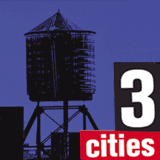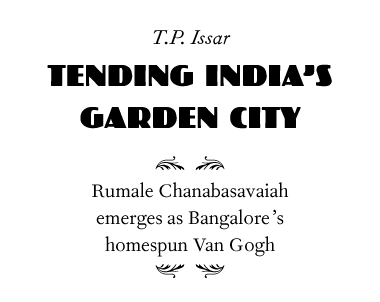 Of all the fondly phrased sobriquets that Bangalore has elicited from its admirers over the years – The City Beautiful, The Garden City, The Pensioner's Paradise, The Public Sector City, The Gourmet's Paradise, The Pub City, The Silicon Valley of India, The Cyberpolis, The Biotech Mecca – it is "The Garden City" that has stuck. Bangalore sits high on a plateau, surround by gently undulating peaks and valleys. As an incipient city, it must have been a setting of cypresses, gulmohurs and rain-trees, with whole vistas glistening with colorful shrubs and wild flowers. Even today, with a population currently pushing 6.5 million, Bangalore is a city of blossoms. Few cities have undergone Bangalore's metamorphosis in size, image, life-style and skyline, while retaining, all the while, their "garden city" character. 
Varna Maitri, Vidhana Soudha Corner
Bangalore, like any thriving garden, has been well tended over the years. In the era before British rule, the city's ruler, Hyder Ali, planted the Lal Bagh, a 40-acre mango grove that became his retreat. His son, Tipu Sultan, enriched its botanical variety by acquiring exotic plants and tree-species from destinations as distant as Mauritius. With the "British Commission" of 1831 after Tipu's fall, and over the next 50 years, the British continued the work of expanding the garden's collection. Major Waugh, and later John Cameron, introduced a mix of indigenous and exotic plants: the Jacaranda, the Tabebias, the Cassias, the Milingtonia, the Tulip tree, the Copper Pod, the Amhertia, the Colvilleas, the Coral Tree, the Dolichandrone, the Bottle Brush, as well as numerous shrubs, such as the Brazilian Bougainvillaea. After the Rendition of 1881, the collection of the indigenous and exotic plants further expanded and the Lal Bagh garden grew threefold in size. It was also during the decades of British rule that Bangalore saw the laying of its 300-acre, sprawling Cubbon park around the equestrian statue of Lord Cubbon, the "Sole Commissioner." The city's floral Ritusamhara – a yearlong celebration of seasons through blossoms – began around the turn of the century, when Gustav Herman Krumbiegel, the German botanist hand-picked by the Maharaja, took charge of the Mysore State gardens and developed his concepts of "landscape architecture." He manned his post long enough to see the fruits of his work: meticulously planned and laid out gardens of balustrade fences, terraces, decorative urns, superbly carved benches, and domed pillars, all sited amongst imaginatively created arbors and sequentially blossoming trees. Such settings of beauty are bound to have their chroniclers. Many a painter has captured the Garden City charms of Bangalore, but the one who stands out – in sheer volume of work and originality of rendering – is the late Rumale Chanabasavaiah, Bangalore's homespun Vincent Van Gogh. In his prolific watercolors of Bangalore's blossoms and park-niches, one finds the same curved and flourished strokes, executed with the Dutch genius's unique frenzy and feeling. It is uncanny that Van Gogh should have found, across a hundred years and many continents, an echo in the brush of a simple, satchel-carrying Indian who hadn't even heard of the Dutch master. There is, of course, no substitute for a walk through Bangalore's parks and arbors to savor the city's garden charm and its dazzling, multihued efflorescence through seasons. But the next best thing would be to feast one's eyes upon Rumale's vast treasure of evocative paintings, lovingly conserved by his family in his local studio. 
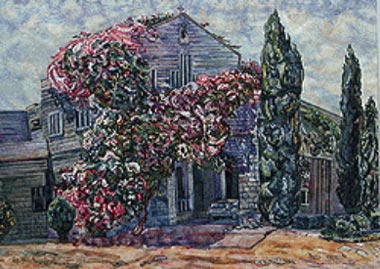
St. Peter's Seminary
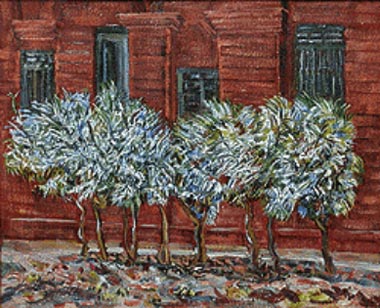
Play of Light, High Court
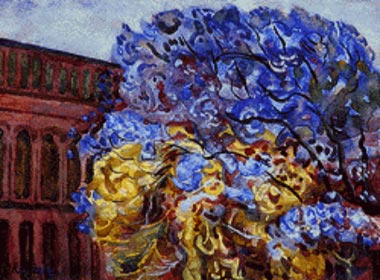
Jacaranda and Yellow Bloom, High Court
Paintings by Rumale Chanabasavaiah.
Back to Top | More Extras | Subscribe to Topic
 |

